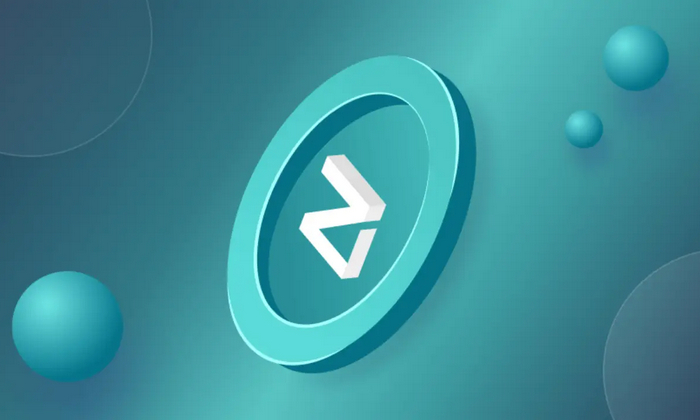-
 Bitcoin
Bitcoin $96,875.1339
1.98% -
 Ethereum
Ethereum $1,836.6088
1.46% -
 Tether USDt
Tether USDt $1.0002
0.00% -
 XRP
XRP $2.2153
0.52% -
 BNB
BNB $598.0962
-0.29% -
 Solana
Solana $149.6130
0.67% -
 USDC
USDC $0.9999
-0.01% -
 Dogecoin
Dogecoin $0.1808
3.26% -
 Cardano
Cardano $0.7129
3.32% -
 TRON
TRON $0.2449
-0.81% -
 Sui
Sui $3.4790
-0.52% -
 Chainlink
Chainlink $14.7811
1.17% -
 Avalanche
Avalanche $21.6745
3.02% -
 Stellar
Stellar $0.2769
2.34% -
 UNUS SED LEO
UNUS SED LEO $8.9457
-2.17% -
 Toncoin
Toncoin $3.2266
2.11% -
 Shiba Inu
Shiba Inu $0.0...01352
1.77% -
 Hedera
Hedera $0.1882
2.94% -
 Bitcoin Cash
Bitcoin Cash $369.6345
0.77% -
 Hyperliquid
Hyperliquid $20.2105
1.80% -
 Litecoin
Litecoin $88.5807
4.77% -
 Polkadot
Polkadot $4.2265
2.97% -
 Dai
Dai $0.9999
-0.01% -
 Monero
Monero $286.3720
2.15% -
 Bitget Token
Bitget Token $4.4028
1.11% -
 Ethena USDe
Ethena USDe $1.0006
0.04% -
 Pi
Pi $0.5947
-2.37% -
 Pepe
Pepe $0.0...08806
-1.29% -
 Aptos
Aptos $5.4852
1.79% -
 Uniswap
Uniswap $5.3102
1.07%
One article to fully understand what ZIL coins are, the characteristics of ZIL coins, and future development trends
Zilliqa's innovative sharding technology sets it apart as a highly scalable blockchain platform capable of processing thousands of transactions per second.
Nov 01, 2024 at 12:24 pm

Understanding Zilliqa (ZIL): Characteristics and Future Prospects
1. Overview of Zilliqa (ZIL)
Zilliqa (ZIL) is a high-throughput blockchain platform designed to address the scalability challenges faced by traditional blockchains like Bitcoin and Ethereum. It utilizes sharding technology to simultaneously process multiple transactions across a network of shards, enabling rapid and efficient transaction verification.
2. Characteristics of Zilliqa (ZIL)
- High Throughput: Zilliqa can process up to 2,488 transactions per second (TPS), far exceeding the capabilities of most other blockchains.
- Scalability: Sharding allows Zilliqa to handle a vast number of transactions simultaneously, ensuring its scalability for future growth.
- Smart Contract Support: Zilliqa supports smart contract development, enabling the creation of decentralized applications (dApps) and automated contracts.
- Consensus Mechanism: Zilliqa uses a practical Byzantine fault tolerance (PBFT) consensus algorithm, which provides high security and fast transaction confirmation times.
- Plasma Integration: Zilliqa has integrated with the Plasma framework, allowing for the offloading of computations and state storage onto separate sidechains, further enhancing scalability.
3. Future Development Trends
The Zilliqa team is actively developing new features and improvements to enhance the platform's capabilities and appeal. Key areas of focus include:
- Increased TPS: Ongoing research and development aims to increase Zilliqa's transaction throughput to even higher levels.
- Cross-Chain Interoperability: Zilliqa is exploring interoperability with other blockchains through bridges and integrations.
- Enterprise Adoption: Zilliqa's scalability and security make it well-suited for enterprise use cases, and the team is pursuing collaborations with industry leaders.
- Developer Support: Zilliqa is committed to providing a robust ecosystem for developers, with incentives for dApp development and comprehensive documentation.
4. Conclusion
Zilliqa is a promising blockchain platform that addresses the scalability concerns of traditional blockchains. Its high throughput, sharding technology, smart contract support, and active development roadmap make it an attractive option for developers and users alike. As the blockchain landscape evolves, Zilliqa is well-positioned to maintain its leadership in high-performance blockchain applications and contribute to the broader growth of the industry.
Disclaimer:info@kdj.com
The information provided is not trading advice. kdj.com does not assume any responsibility for any investments made based on the information provided in this article. Cryptocurrencies are highly volatile and it is highly recommended that you invest with caution after thorough research!
If you believe that the content used on this website infringes your copyright, please contact us immediately (info@kdj.com) and we will delete it promptly.
- The Ultimate List of the Top 10 Meme Coins with High Community Trust and Upside Potential
- 2025-05-02 14:35:12
- Virtuals Ecosystem Surges Ahead Amid Growing Sector Interest
- 2025-05-02 14:35:12
- Sui Integrates sBTC to Unlock Bitcoin (BTC) Decentralized Finance Opportunities
- 2025-05-02 14:30:12
- OpenSea Makes a Stunning Comeback, Pulling in Over 80,000 New Users
- 2025-05-02 14:30:12
- We Asked AI to Predict Raydium (RAY) Price in May
- 2025-05-02 14:25:12
- From losing five matches in their first six, Mumbai Indians have registered six back-to-back wins in the IPL 2025 to make an unprecedented leap in the points table.
- 2025-05-02 14:25:12
Related knowledge

What is Ethereum’s Slashing mechanism and how to punish malicious behavior?
Feb 20,2025 at 03:08am
Key PointsOverview of slashingDifferent types of slashing in EthereumIncentives and consequences of slashingIdentifying and reporting slashed validatorsOngoing discussions and potential improvementsEthereum's Slashing Mechanism: Punishing Malicious BehaviorEthereum's slashing mechanism is an essential tool for ensuring network security and punishing mal...

What is the verifier node of Ethereum and how to become a verifier?
Feb 19,2025 at 06:00pm
The Verifier Node of Ethereum: A Comprehensive GuideKey Points:What is a Verifier Node?How to Become a Verifier NodeResponsibilities and Rewards of a Verifier NodeMinimum Requirements for Becoming a Verifier NodePotential Difficulties in Running a Verifier Node1. What is a Verifier Node?A Verifier Node is an independent entity on the Ethereum network th...

What is Ethereum’s staking, and how to participate and earn money?
Feb 19,2025 at 04:37pm
Key Points:Understanding Ethereum's Staking MechanismSteps to Participate in StakingBenefits and Rewards of StakingSecurity and Risk ConsiderationsTechnical Requirements and Hardware OptionsPotential Challenges and Troubleshooting TipsFAQs on Ethereum StakingWhat is Ethereum's Staking?Proof-of-Stake (PoS) is a consensus mechanism used in blockchain netw...

What is Ethereum’s DAO (Decentralized Autonomous Organization) and how does it work?
Feb 20,2025 at 03:12am
Key PointsDefinition and Structure of a DAOGovernance and Decision-Making in DAOsBenefits and Use Cases of DAOsChallenges and Limitations of DAOsWhat is Ethereum's DAO (Decentralized Autonomous Organization) and How Does It Work?Definition and Structure of a DAOA Decentralized Autonomous Organization (DAO) is an innovative governance and management fram...

What is Ethereum's multi-signature wallet and how to improve security?
Feb 20,2025 at 02:18pm
Key Points:Understanding the Concept of a Multi-Signature WalletBenefits and Drawbacks of Multisig WalletsRequirements for Setting Up a Multisig WalletStep-by-Step Guide to Generating a Multisig WalletImplementing Strategies for Enhanced Security1. Understanding the Concept of a Multi-Signature WalletA multi-signature (multisig) wallet in the Ethereum e...

What is Ethereum's oracle and how to provide data for smart contracts?
Feb 21,2025 at 01:30am
Key Points:Understanding the concept of oracles in EthereumExploring different types of oraclesDetailed guide on how to provide data for smart contractsAddressing potential challenges and considerationsWhat is Ethereum's Oracle?Oracles are crucial components in the Ethereum ecosystem, enabling smart contracts to access real-world data and off-chain even...

What is Ethereum’s Slashing mechanism and how to punish malicious behavior?
Feb 20,2025 at 03:08am
Key PointsOverview of slashingDifferent types of slashing in EthereumIncentives and consequences of slashingIdentifying and reporting slashed validatorsOngoing discussions and potential improvementsEthereum's Slashing Mechanism: Punishing Malicious BehaviorEthereum's slashing mechanism is an essential tool for ensuring network security and punishing mal...

What is the verifier node of Ethereum and how to become a verifier?
Feb 19,2025 at 06:00pm
The Verifier Node of Ethereum: A Comprehensive GuideKey Points:What is a Verifier Node?How to Become a Verifier NodeResponsibilities and Rewards of a Verifier NodeMinimum Requirements for Becoming a Verifier NodePotential Difficulties in Running a Verifier Node1. What is a Verifier Node?A Verifier Node is an independent entity on the Ethereum network th...

What is Ethereum’s staking, and how to participate and earn money?
Feb 19,2025 at 04:37pm
Key Points:Understanding Ethereum's Staking MechanismSteps to Participate in StakingBenefits and Rewards of StakingSecurity and Risk ConsiderationsTechnical Requirements and Hardware OptionsPotential Challenges and Troubleshooting TipsFAQs on Ethereum StakingWhat is Ethereum's Staking?Proof-of-Stake (PoS) is a consensus mechanism used in blockchain netw...

What is Ethereum’s DAO (Decentralized Autonomous Organization) and how does it work?
Feb 20,2025 at 03:12am
Key PointsDefinition and Structure of a DAOGovernance and Decision-Making in DAOsBenefits and Use Cases of DAOsChallenges and Limitations of DAOsWhat is Ethereum's DAO (Decentralized Autonomous Organization) and How Does It Work?Definition and Structure of a DAOA Decentralized Autonomous Organization (DAO) is an innovative governance and management fram...

What is Ethereum's multi-signature wallet and how to improve security?
Feb 20,2025 at 02:18pm
Key Points:Understanding the Concept of a Multi-Signature WalletBenefits and Drawbacks of Multisig WalletsRequirements for Setting Up a Multisig WalletStep-by-Step Guide to Generating a Multisig WalletImplementing Strategies for Enhanced Security1. Understanding the Concept of a Multi-Signature WalletA multi-signature (multisig) wallet in the Ethereum e...

What is Ethereum's oracle and how to provide data for smart contracts?
Feb 21,2025 at 01:30am
Key Points:Understanding the concept of oracles in EthereumExploring different types of oraclesDetailed guide on how to provide data for smart contractsAddressing potential challenges and considerationsWhat is Ethereum's Oracle?Oracles are crucial components in the Ethereum ecosystem, enabling smart contracts to access real-world data and off-chain even...
See all articles





















































































